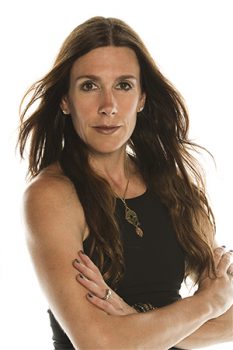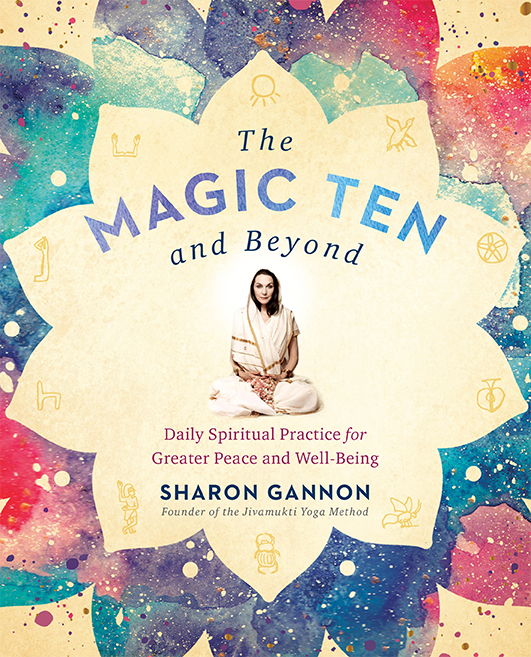
Note: Part 1 of this interview appeared on the Main Street Vegan blog last week.
HS: Prior to practicing yoga, did you have an ‘a ha’ moment that helped you embrace veganism?
SG: In 1982, while living in Seattle, Washington, working as an artist—dancer, painter, poet and musician, I went to see The Animals Film, a British documentary that probed into the relationship between human beings and other animals. Those two hours and twenty minutes in the movie theater altered my life like no other single incident. The film exposed the cruel, exploitive and callous ways that we human beings treat our fellow animals. The film showed the use of animals as entertainment, as food, as clothing and for military and “scientific” research. It ended with scenes from the ALF (Animal Liberation Front) rescuing animals from a laboratory. The movie caused me to radically rethink art, the purpose of the artist, and what I was doing with my life. If I wasn’t contributing to stopping the insanity I saw depicted in this film, what was the value in what I was doing? I was an on again/off again vegetarian before the film. Afterwards I became a committed vegetarian and then a vegan, then a vegan activist then a yoga teacher.
HS: The rate of recidivism is high among vegans. What is your advice to the aspiring yogi who has fallen off the vegan wagon?
SG: They stopped being vegan because they were not committed to it as a means to shift their consciousness away from self-centered concerns and become more other-centered, which is yoga’s aim. Veganism can be seen as a yoga practice. As in any practice, for it to yield positive results you have to do it over a long period of time. To do something for a long time you have to have a good reason to do it. To practice yoga takes discipline and commitment. If someone has fallen off the path—let’s think of it as just an intermission. Because it was a film that caused me to become a committed vegan, I would recommend watching one of the great films out now: Earthlings, Dominion, Cowspiracy or What the Health. What the Health and Cowspiracy, by the way, are both on Netflix and were made by certified Jivamukti Yoga teacher, Kip Andersen. He is working on a new film, Cowspiritual, that explores the link between veganism and spirituality—so be sure watch out for that one. And perhaps read my little book, Yoga and Vegetarianism.

HS: Your latest book touches on how the clarity of an intention during asana has the power to heal yourself and others. What is your advice to yoga teachers on how they can effectively communicate to their students about the deeper power of intention to set at the beginning of a class?
SG: Teachers should give the students a chance, some time to define an intention before starting the practice and then perhaps remind those students at some point during the class to remember their initial intention and to ask themselves if they are still focused on that. I don’t feel that the teacher should decide for the student what the student’s intention should be—that is a private matter for the student to figure out; none the less, I feel that teaching the student that intention is important is an important job of the teacher.
These days people practice yoga for all kinds of reasons. Yoga practice was originally intended to bring about yoga, union—the realization of your connection to God. It was done to free yourself from false identification with your body and mind; to free yourself from avidya and the selfishness that results from ignorance of your true nature. The point is that yoga will give you anything you want. What’s in your mind will color your practice. Patanjali says that what we are thinking of while we are doing anything will determine the result.
HS: In the ‘Blessings’ section, you teach that when dealing with toxic or hurtful people, ‘If you want someone to be a holy being, you must see him or her as a holy being. They actually only exist in your mind anyway.’ When doing this, would you recommend keeping them near, or creating space between you and simply doing the work internally?
SG: This work is to be done in the privacy of your own mind. I do not recommend that you seek hurtful people out and meet them for coffee to try to talk things out.
HS: I love how you are drawing a possible connection between ancient Egyptians and yoga. Could you expand on this for the reader?
SG: I feel that yoga as a philosophy as well as a practice may be more universal than is usually thought and could have been shared by both ancient cultures of India and Egypt. I feel this because herding animals like sheep and goats and then domesticating those animals as well as other animals, primarily cows, forms the foundation of both cultures. Where there was animal agriculture there was farming and urban areas, cities and market places to buy and sell the commodities derived from the exploitation of animals and the Earth. In the ancient world, enslaving and exploiting animals so as to profit commercially became a phenomenon that spread globally around ten thousand years ago and was not limited to India and Egypt.
It is my feeling that around the time than this agriculture shift was beginning there were some human beings who rejected it and felt that it would not lead to happiness. Those beings moved away from the cities and lived in remote places in the mountains, forests and jungles. There they embarked on a project to live in harmony with animals and nature and began to experiment with ways to experience happiness that did not depend on depriving others of happiness. These beings came to be known as yogis—those who realized their connection to the Divine source and could live independently of material needs. Those beings could have taught these secret keys to happiness to others who were interested and so schools developed where these ‘mysteries’ were taught and refined.
HS: I have a feeling it wasn’t easy for you to stop at TEN ways to add magic to our lives — do you have any favorites that didn’t make it into the book?
SG: True—but I will retain the right to keep some things private

Sharon Gannon is the founder of the Jivamukti Yoga School and Jivamukti Method, created with David Life in New York City in 1984. Since, Jivamukti Yoga studios have opened all over the world, including in London, Moscow, Munich, Berlin and Sydney. Sharon is an artist, animal rights advocate, musician and a best-selling author of many acclaimed publications with the release of The Magic Ten and Beyond.
Twitter: @jivamuktiyoga
Instagram: @jivamuktiyoga
Website: http://www.jivamuktiyoga.com
Jivamukti Yoga studios have opened all over the world, including in London, Moscow, Munich, Berlin and Sydney.

Holly Skodis is a Main Street Vegan Academy Vegan Lifestyle Coach and Educator, 500-hour Registered Yoga Teacher (RYT 500) and co-founder of Digital Creative Agency, Real Pie Media, Inc. Her goal is to help lead you on a trajectory of building a stronger, happier, healthier and kinder you. She has been featured in Yoga Journal’s Stoke Your Spirit: 26 Images to Inspire Authenticity with renowned photographer Robert Sturman. Holly lives in Fairfield County, Connecticut with her husband, 2 daughters and 2 dogs who are also vegan. Follow Holly on Instagram at @hollyskodis or visit www.hollyskodis.com to connect with her.


Hello vegans!! In my 20th year aa a vegan man!!
Bravo! I’ve been a vegetarian for ~20 years, vegan for last 6,7,8…I’ve lost count as it is so ingrained within me that it isn’t an afterthought anymore.